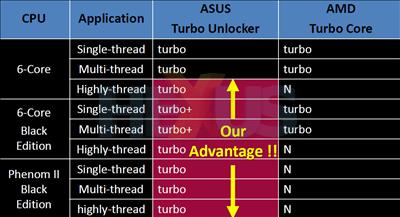ARES, where art thou
Where's ARES?Remember the all-conquering ARES card that ASUS showcased at CeBIT this year? Designed to be the fastest graphics card in the world by pairing two Radeon HD 5870s on to one PCB and then liberally adding about a tonne of copper, the dual-GPU monster is on course to be released in limited quantities after this year's COMPUTEX show.
Trouble is, other ATI/AMD partners have jumped on the ultra-high-end bandwagon and sampled Radeon HD 5970 4GB cards themselves, matching the basic specification of the ARES. Sapphire's TOXIC being a case in point.
Here's an 'uncovered' shot of ARES, replete with hunks of copper and heatpipes galore. ASUS will be shipping the card at frequencies of 850MHz core and 4,800MHz - identical to a single HD 5870's - but Sapphire's card is faster and XFX's proposed HD 5970 4GB will provide Eyefinity6 support to boot.
There's little denying the sheer oomph of ARES, yet we reckon that ASUS would do well to qualify it at 925MHz core and 5,200MHz memory and launch it as the world's fastest, because the ludicrous cooling deserves to be pushed. Believe it or not, the massive axial fan can push a whopping 119.21cfm at 4,200rpm and 35dBA.
Why choose ASUS motherboards?
ASUS also made of point of highlighting the array of features on the majority of its premium boards. In particular, we were struck by how much emphasis the motherboard division is placing on AMD-based systems. A case in point is, ASUS says, the ability to use a number of features, such as Turbo Unlocker, Core Unlocker and TPU, to turn a dual-core AMD CPU into an overclocked quad-core model. This was demonstrated by using a Phenom II X2 system and enabling Turbo Key II (part of TPU) and Core Unlocker in tandem.

ASUS
also believes that its Turbo
Unlocker technology is better than that found on the Turbo Core-enabled
1090T and 1055T chips.
Summary
Product differentiation is key when designing premium products. The Republic of Gamers (ROG) is ASUS' premium line and the company's engineers have been busy with extreme makeovers for existing products.
The CROSSHAIR IV Extreme may do well if ASUS can get it out to market quickly, especially on the back of a well-received Phenom II X6 CPU launch. Our reservations lie with just how robust Lucid's driver support will be.
ROG Xpander is a curious product that's the very definition of niche. Appealing to those who like to lay £1,000-plus on graphics it might just sell on the novelty value.
Dual-GPU ARES initially showed the most promise and would have been a hit if released a couple of months ago. AMD's graphics-specific partners have shown that it's possible to engineer a dual HD 5870 card without using vast copper reserves. We still wait with bated breath to see just how the ASUS monster card will perform and, perhaps more importantly, overclock.
Hoping to inculcate the press on the benefits of ASUS hardware, ROG is a victim of its own success, insofar as there are probably too many features that get overlooked by all but the most dogged enthusiast. Sometimes, just sometimes, less is more.
Summary
Product differentiation is key when designing premium products. The Republic of Gamers (ROG) is ASUS' premium line and the company's engineers have been busy with extreme makeovers for existing products.
The CROSSHAIR IV Extreme may do well if ASUS can get it out to market quickly, especially on the back of a well-received Phenom II X6 CPU launch. Our reservations lie with just how robust Lucid's driver support will be.
ROG Xpander is a curious product that's the very definition of niche. Appealing to those who like to lay £1,000-plus on graphics it might just sell on the novelty value.
Dual-GPU ARES initially showed the most promise and would have been a hit if released a couple of months ago. AMD's graphics-specific partners have shown that it's possible to engineer a dual HD 5870 card without using vast copper reserves. We still wait with bated breath to see just how the ASUS monster card will perform and, perhaps more importantly, overclock.
Hoping to inculcate the press on the benefits of ASUS hardware, ROG is a victim of its own success, insofar as there are probably too many features that get overlooked by all but the most dogged enthusiast. Sometimes, just sometimes, less is more.







